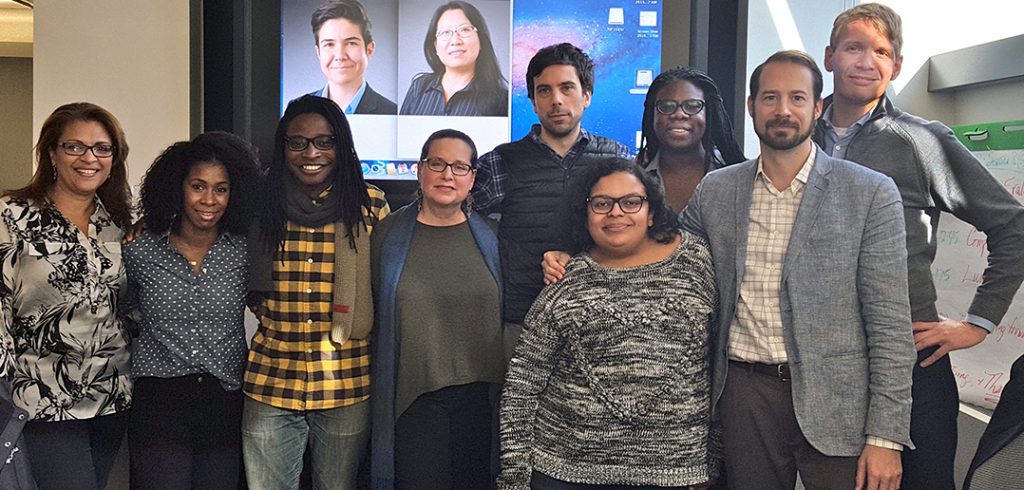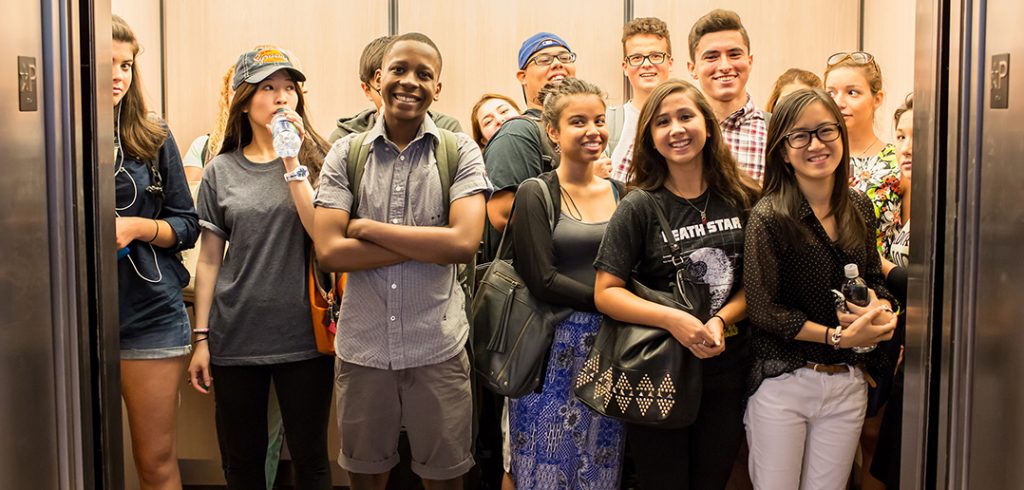The initiative follows a report and action plan released late last year by the University’s Task Force on Diversity, calling for new measures to improve diversity and race relations on campus.
At the request of Joseph M. McShane, S.J., president of Fordham, Virginia Roach, Ed.D., dean of the Graduate School of Education (GSE), and Margo Jackson, Ph.D., professor of counseling psychology of GSE’s Division of Psychological and Educational Services, developed the pedagogy curriculum.
Led by Jackson, the intensive curriculum goes well beyond a mere workshop in that it will produce several academic papers and, perhaps, a publication of the group’s findings.

Creating a Critical Consciousness
Titled the New Faculty Constructive Diversity Pedagogy (CDP) Participatory Action Research Project, the effort is a pilot designed for incoming faculty to help develop “critical consciousness” and skills to promote learning and navigate diversity dialogue in classrooms. The group, consisting of 10 professors from various disciplines, met last fall for eight sessions to discuss readings, participate in experiential exercises, and provide support with experiences from their classrooms.
“These conversations make people cringe in the classroom, and faculty avoid them like the plague,” said Jackson. “But a university is the best place for difficult dialogue. Professors have avoided these kinds of discussion because we need the tools to do it.”
Jackson said that certain power structures enable distinctions between “which voices are privileged and which voices are silenced.” In turn, that plays out in the classroom, she said.
“All of us may unintentionally use that power to silence people, and we need to be conscious of that,” she said. “Critical consciousness comes from recognizing social injustices on an individual level, an interpersonal level, and on a systemic level.”
She said the various identities in the classroom, including those of the professor, can create blind spots. To further assess those biases, the CDP project included supplemental readings on social consciousness, with cases fresh from the classroom.
Facilitating the ‘Eureka Moment’
Participant Shannon Waite, Ed.D., clinical assistant professor at the GSE, said that even with her years of experience teaching K through 12, transitioning to higher ed presented a learning curve that was mitigated by discussions with her colleagues from different departments.
She said that although the readings and discussions were focused on diversity issues, she came to some pedagogical realizations that went beyond the subject. She found that she often entered the classroom armed with her own agenda, one that was based partly on her own experience as a person of color born and raised in the suburbs.
For example, she said that she framed a class discussion based on material in Glenn Singleton’s book, Courageous Conversations About Race, and came to class prepared to teach students what she had taken from the book—rather than allowing students to discover their own meaning through discussion.
“In my first class I wasn’t subtle, I read Courageous Conversations and thought that the most important factor of the book was ‘owning your race,’ so I went in with that lens and did a gross injustice,” she said. “The [CDP] sessions really helped me understand that’s not good teaching. They helped me re-strategize how to convey the significance of an idea without being too explicit.”
She said later a guest lecturer was discussing racially sensitive issues and acknowledged that he was talking about race as a white male. That subtle gesture hit home for one student, who told Waite that she now understood what she meant by “owning your race.”
“They need to have that eureka moment on their own, rather than ‘Dr. Waite said it,’” she said. “I was able to go back to the panel and say I had this great moment, and it was through sharing and hearing different perspectives that led me to it.”
Escaping the Filter Bubble
Brent Strang, a lecturer of communications, said that holding the seminar during election season turned out to be fortuitous, because he also found it resonated beyond the stated goals of a racial dialogue. The seminar teachings applied to political points of view as well.
“Our semester’s social media syllabus talked about ‘filter bubbles’ and I had embarrassingly assumed a left bias in [teaching in] the classroom,” he said.
Filter bubbles are computer algorithms that mine user search data to feed a user likeminded news and information. Strang said he presented memes that made fun of both Donald Trump and Hillary Clinton, but he admitted that his remarks toward Trump “were a bit on the snide side.”
“I assumed I had 90 percent or more class support, and I assumed that Hillary would win and that Trump supporters were on the fringes,” he said.
He now believes it best to be upfront about his political views in class. He said college students are going to figure out their professor’s stance, and not revealing it creates “dissonance” and leaves the teaching “suspect.” Eventually, he told his students he was a Democrat.
“I admitted very candidly that I may have been presumptive and assumed the bias of the classroom,” he said. “I apologized to the class in case they were afraid to participate out of fear of retribution.”
He credits the CDP sessions with helping him see his own biases.
“In those sessions we had a lot of trust, we all had the opportunity to confess our difficulties and our challenges with some issues,” he said.
“I am aware I have a lot of authority granted to me as a white straight male,” he said. “What I do to assist that delicate dance is try to emphasize a vulnerability, and an openness to different points of view.”


